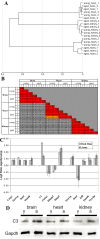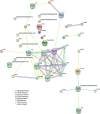Activation of the immune response is a key feature of aging in mice
- PMID: 19255868
- PMCID: PMC2778679
- DOI: 10.1007/s10522-009-9219-1
Activation of the immune response is a key feature of aging in mice
Abstract
The process of aging is complex involving numerous factors centered on transcriptional changes with advanced age. This study was aimed at elucidating mechanisms involved in mouse aging by conducting both gene expression and biochemical analyses on isolated mouse brain, heart and kidney. The gene expression analysis was not aimed at solely highlighting age-related transcriptional changes but also revealing regulated biological processes, cellular compartments, signaling and metabolic pathways. We have uncovered a conserved increase in the expression of genes mediating immune responses in all the tissues analyzed. In addition, elevated levels of lipid hydroperoxides (LPO)—an indicator of increased levels of radical oxygen species, implicate an oxidative stress-mediated activity of NF-kB signaling. In summary, these results suggest that transcriptional changes are most probably the downstream effect of environmental and endogenous factors constantly affecting the organism during its lifetime. In addition, we propose LPO as a potential biomarker of aging.
Figures




References
Publication types
MeSH terms
Substances
LinkOut - more resources
Full Text Sources
Medical

